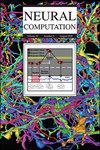Uncovering Dynamical Equations of Stochastic Decision Models Using Data-Driven SINDy Algorithm
IF 2.7
4区 计算机科学
Q3 COMPUTER SCIENCE, ARTIFICIAL INTELLIGENCE
引用次数: 0
Abstract
Decision formation in perceptual decision making involves sensory evidence accumulation instantiated by the temporal integration of an internal decision variable toward some decision criterion or threshold, as described by sequential sampling theoretical models. The decision variable can be represented in the form of experimentally observable neural activities. Hence, elucidating the appropriate theoretical model becomes crucial to understanding the mechanisms underlying perceptual decision formation. Existing computational methods are limited to either fitting of choice behavioral data or linear model estimation from neural activity data. In this work, we made use of sparse identification of nonlinear dynamics (SINDy), a data-driven approach, to elucidate the deterministic linear and nonlinear components of often-used stochastic decision models within reaction time task paradigms. Based on the simulated decision variable activities of the models and assuming the noise coefficient term is known beforehand, SINDy, enhanced with approaches using multiple trials, could readily estimate the deterministic terms in the dynamical equations, choice accuracy, and decision time of the models across a range of signal-to-noise ratio values. In particular, SINDy performed the best using the more memory-intensive multi-trial approach while trial-averaging of parameters performed more moderately. The single-trial approach, although expectedly not performing as well, may be useful for real-time modeling. Taken together, our work offers alternative approaches for SINDy to uncover the dynamics in perceptual decision making and, more generally, for first-passage time problems.用数据驱动SINDy算法揭示随机决策模型的动力学方程。
在知觉决策中,决策的形成涉及到感官证据的积累,这种积累由内部决策变量对某些决策标准或阈值的时间整合实例化,如顺序抽样理论模型所描述的那样。决策变量可以用实验观察到的神经活动的形式来表示。因此,阐明适当的理论模型对于理解感知决策形成的机制至关重要。现有的计算方法要么局限于选择行为数据的拟合,要么局限于神经活动数据的线性模型估计。在这项工作中,我们利用非线性动力学的稀疏识别(SINDy),一种数据驱动的方法,来阐明在反应时间任务范式中经常使用的随机决策模型的确定性线性和非线性成分。基于模型的模拟决策变量活动,假设噪声系数项事先已知,SINDy通过使用多次试验的方法增强,可以很容易地估计动态方程中的确定性项、模型的选择精度和决策时间在一系列信噪比值上。特别是,SINDy在使用更多内存密集型的多试验方法时表现最好,而参数的试验平均表现更为温和。单次试验的方法,虽然预期表现不佳,但可能对实时建模有用。综上所述,我们的工作为SINDy提供了另一种方法来揭示感知决策的动态,更一般地说,是首次通过时间问题。
本文章由计算机程序翻译,如有差异,请以英文原文为准。
求助全文
约1分钟内获得全文
求助全文
来源期刊

Neural Computation
工程技术-计算机:人工智能
CiteScore
6.30
自引率
3.40%
发文量
83
审稿时长
3.0 months
期刊介绍:
Neural Computation is uniquely positioned at the crossroads between neuroscience and TMCS and welcomes the submission of original papers from all areas of TMCS, including: Advanced experimental design; Analysis of chemical sensor data; Connectomic reconstructions; Analysis of multielectrode and optical recordings; Genetic data for cell identity; Analysis of behavioral data; Multiscale models; Analysis of molecular mechanisms; Neuroinformatics; Analysis of brain imaging data; Neuromorphic engineering; Principles of neural coding, computation, circuit dynamics, and plasticity; Theories of brain function.
 求助内容:
求助内容: 应助结果提醒方式:
应助结果提醒方式:


